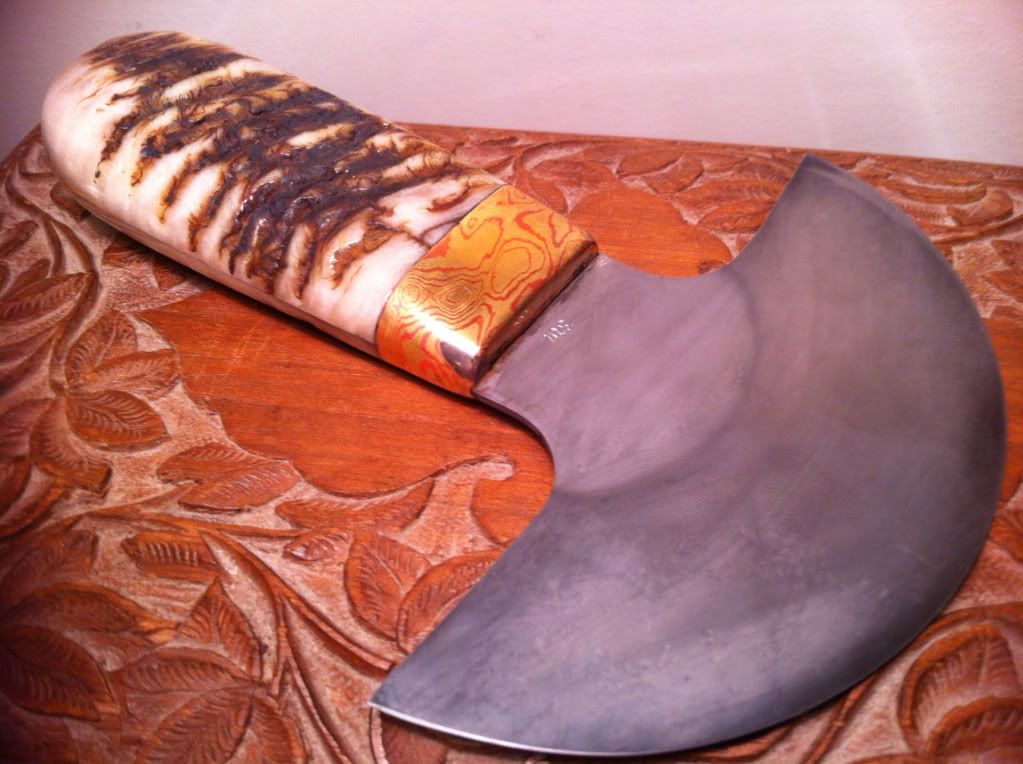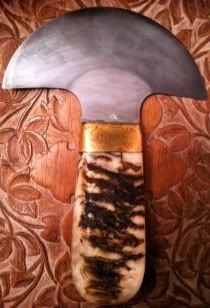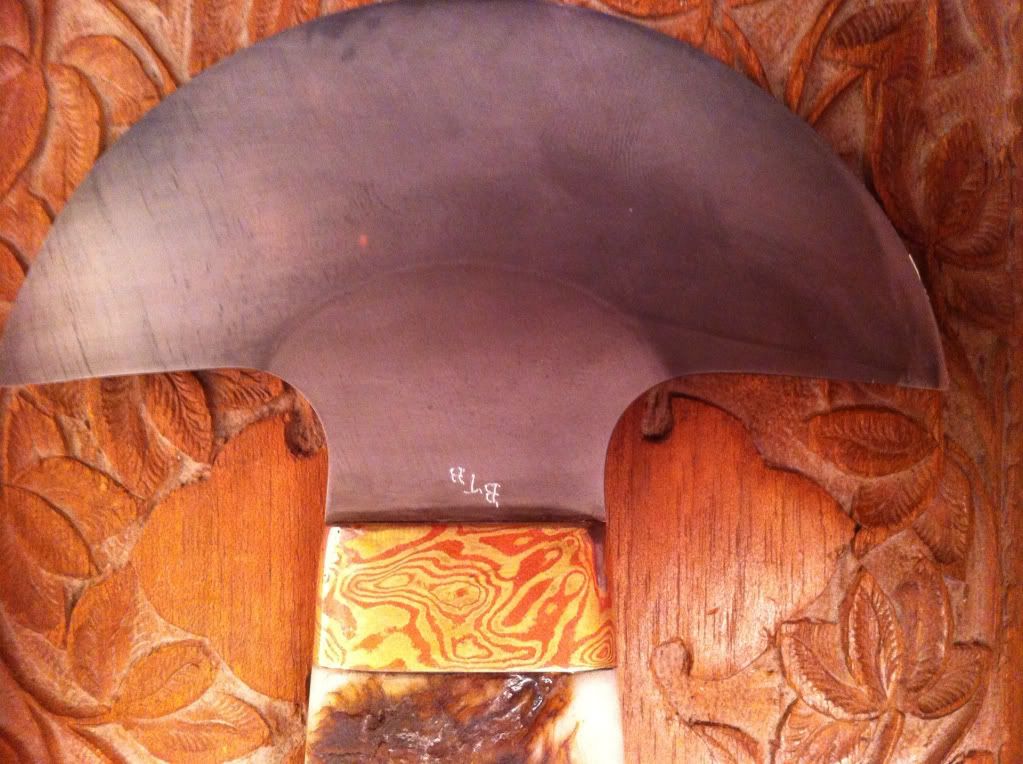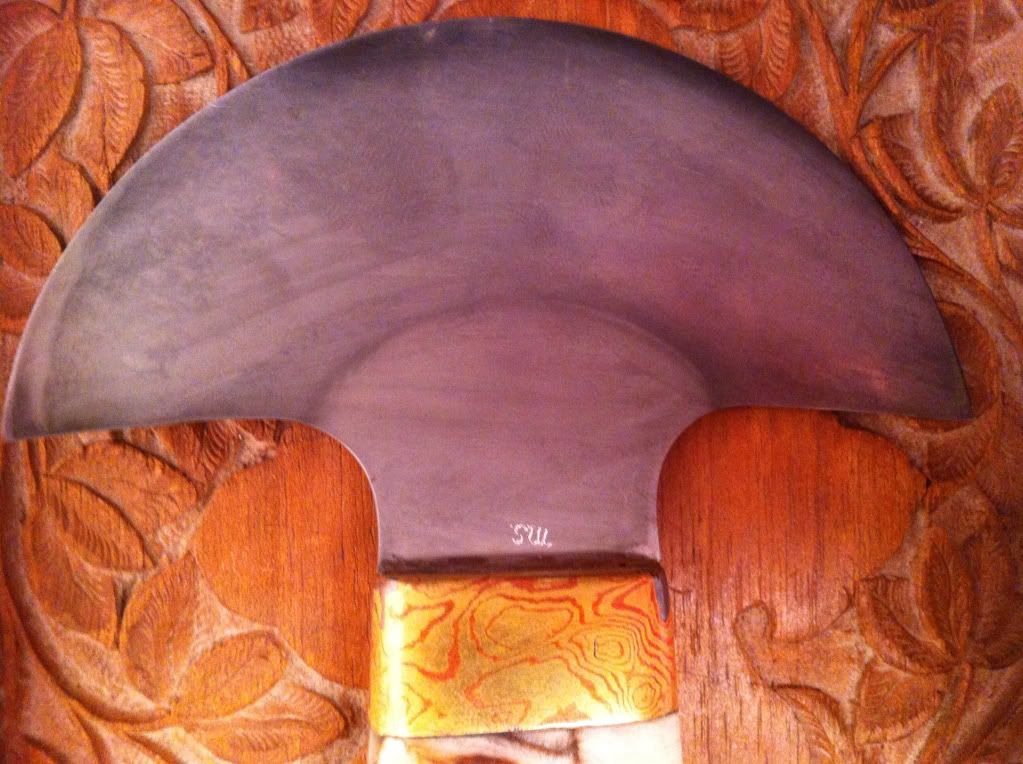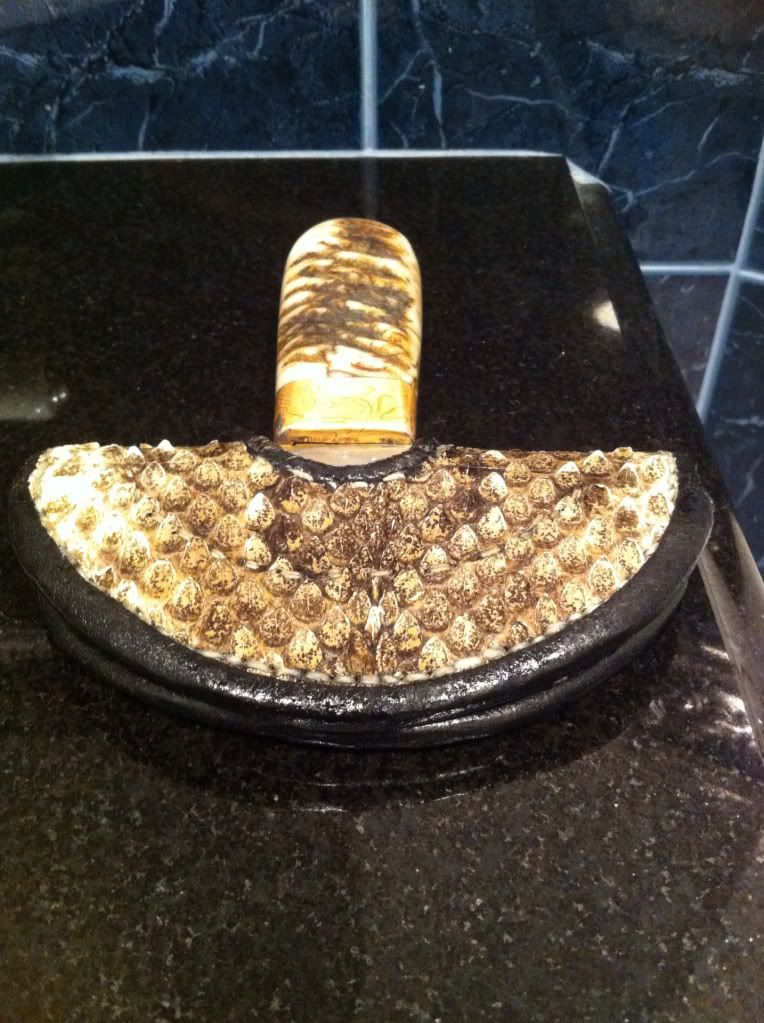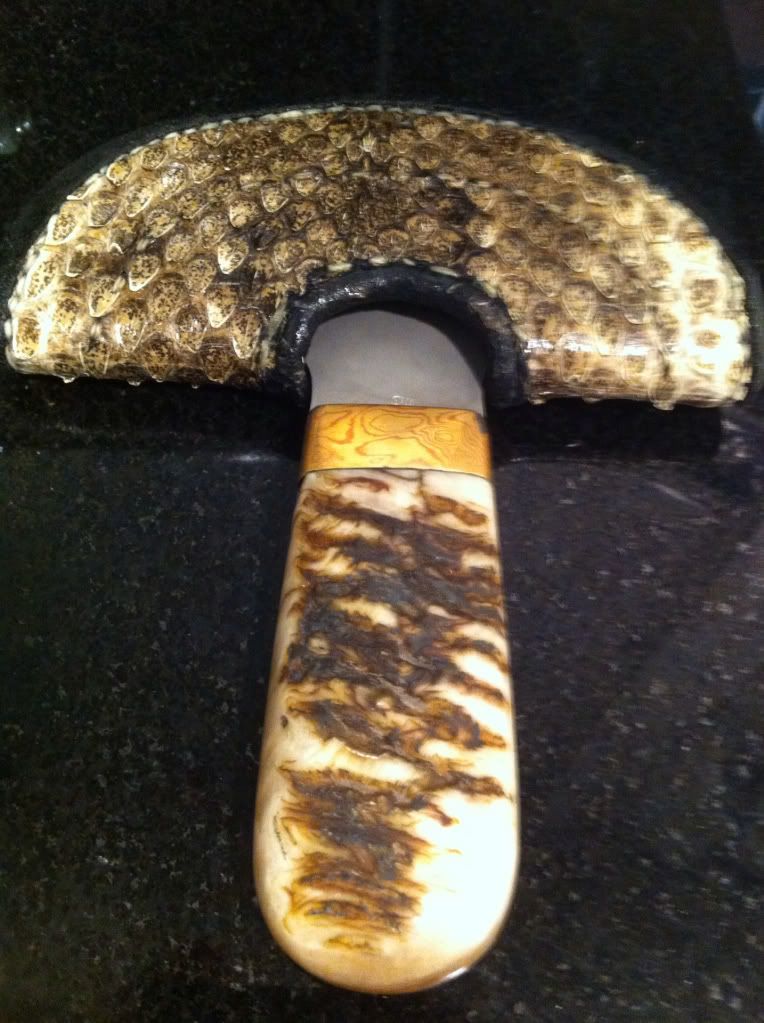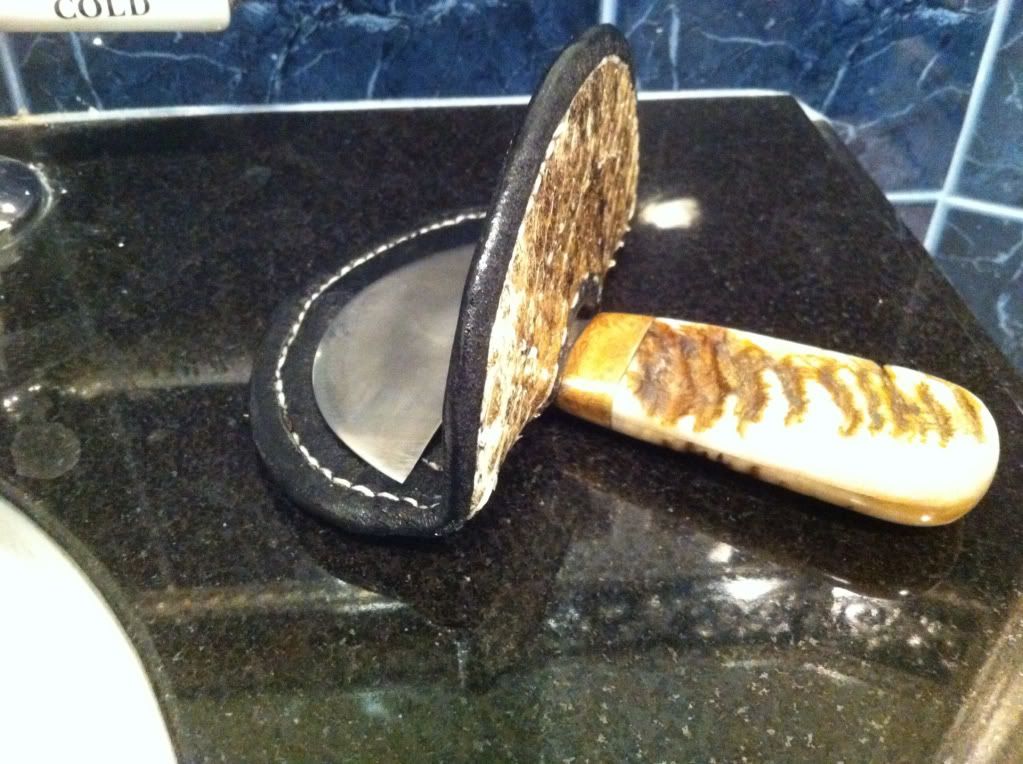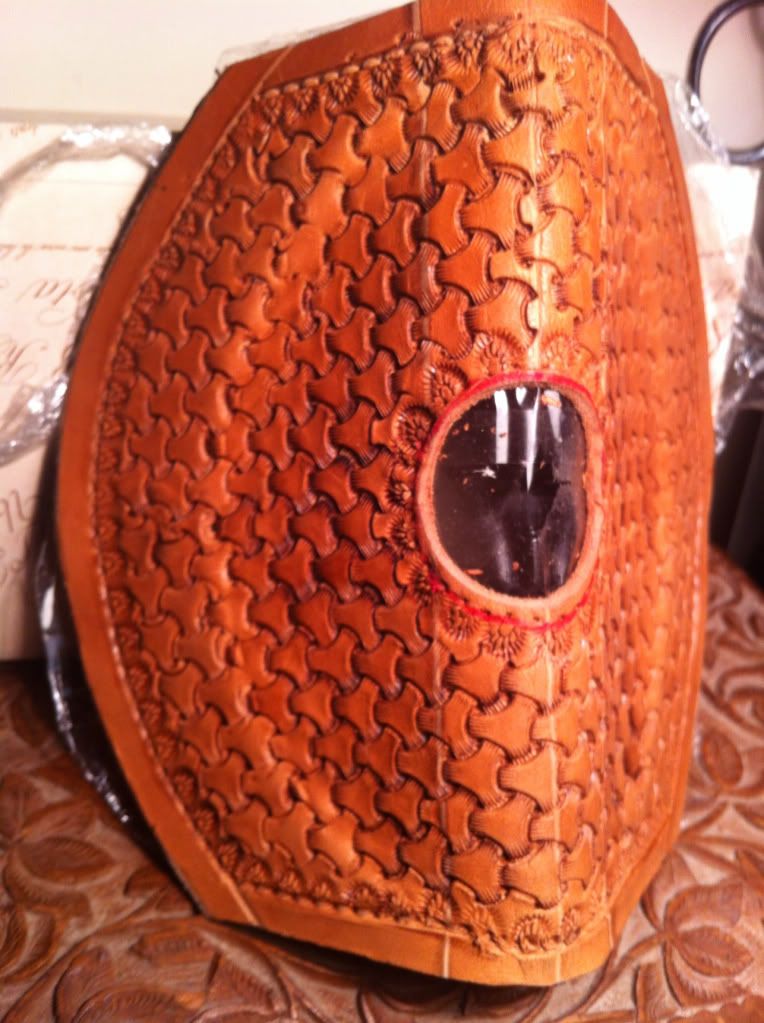Chef Niloc
Well-Known Member
Any of you know a maker who might make me one?
Bill is my #1 fav smith! How ever I already have 2 knives on order with him, well over a year wait. One he told me last week was almost done. Also I don't mind dropping 2+k on a kitchen knife but I can't justify that much for a round knife.I would contact Bill Burke and see if he has the time. He can make kitchen knives from 52100 that hold an edge well, really well.
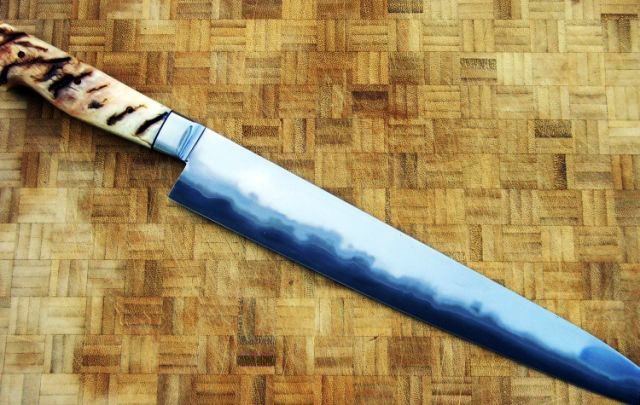
Bill is my #1 fav smith! How ever I already have 2 knives on order with him, well over a year wait. One he told me last week was almost done. Also I don't mind dropping 2+k on a kitchen knife but I can't justify that much for a round knife.
Here's a pic of the suji he made me.

It's the best knife I have.
Ed Caffery had a thread some time back where he discussed the merits of different steels when used in stock removal blades. Being an advocate of 52100 steel, he had read that stock removal blades of 52100 were inferior to a number of other steels in stock removal blades so he set out to do his own tests. Long story short. He ended up with similar results. He found that 52100 makes superb correctly forged blades but mediocre stock removal blades.
You might want to look up that thread before you contract for a knife.
Carey
Stew I don't know if you have Ed Fowler's first book " knife talk"He tested this theory out and the results were overwhelmingly. He did the tests with Wayne Goddaed.
Any way he made 4 knives. Two stock removal and two forged to shape. One of each had multiple heat treats. He did 4 sets of rope cut tests sharpening the blades after each test. The average cuts of the blades were:
Stock removal single quench: 44,35,37,47= 163 cuts
Stock removal triple quench: 49,44,45,57= 195 cuts
Forged single:78,77,60,54=269 cuts
Forged triple: 120,127,132,130=509 cuts
To be honest I don't know why or what the theory behind a forged to shape knife being a better preforming blade and find it unbelievable my self that the forged triple was 2x the preforming blade. If any of you know the argument of why a forged blade is better please let me know.
Hat sad I did a test about two years ago. I used the knife above made by Bill Burke who uses Ed's method ( he was trained by Ed) and put it against one made by Bob Kramer. Bobs knife was straight 52100 not clad like Bills. Bobs blade was made by stock removal but was heat treated with his salt bath recipe ( I think he keeps it a secret?)
I used a similar test that Ed used but these knives are kitchen knives so I used Red Snappers. I checked the blade after each fish to look for chipping after going threw the bones. I falayed the fish stoping when the knife would no longer cut threw the skin easily. Then I stropped the blades on felt loaded with diamond compound and started over. I don't have the results in front of me. I posted them over at the knife forums but can't do a search for it B/C I was banned over there for disagreeing with something Mike Steward sad. But I do remember that Bills blade was the better preforming blade, but not by a land slide like in Ed's test. Bobs knife at the end I want to say cut 12 fish less, maybe 20? And had a very small chip in the edge. After the test Bill and Bob talked and it was noted that Bill did harden his blade a little more something like 62 vs. Bob's 58-60?
